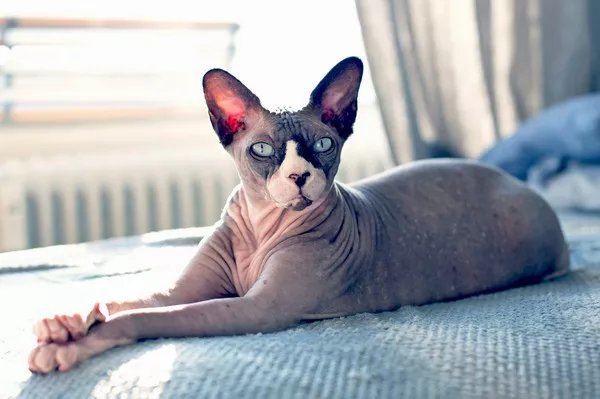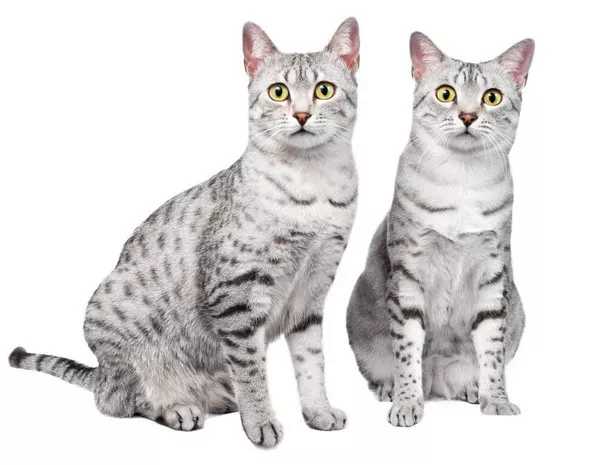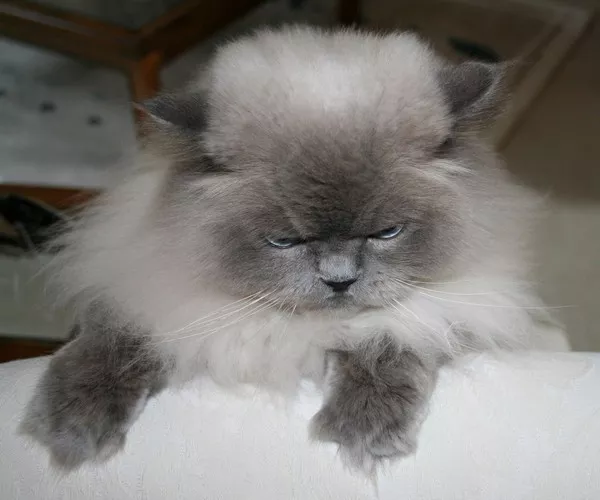The Sphynx cat is renowned for its striking hairless appearance, characterized by its wrinkled skin and almost complete lack of fur. However, within the Sphynx breed, there exists a lesser-known variant called the “Coated Sphynx.” This distinctive feline possesses a layer of soft, fine fur that sets it apart from its fully hairless counterparts. In this article, we will explore the fascinating world of the Coated Sphynx cat, shedding light on its characteristics, care requirements, and what makes it an intriguing addition to the feline kingdom.
The Coated Sphynx: An Introduction
While the Sphynx cat breed itself is often associated with a hairless appearance, a genetic mutation has given rise to a subset known as the Coated Sphynx. These cats possess a short, fine, and velvety coat of hair that covers their body, albeit not as extensively as the fur-covered breeds. The Coated Sphynx retains the Sphynx’s characteristic wrinkled skin, large ears, and expressive eyes, making it an alluring combination of hairless and coated features.
Characteristics of the Coated Sphynx
Fine Coat: The fur of a Coated Sphynx is soft, fine, and often described as velvety to the touch. It can vary in color, pattern, and length but generally does not provide the same insulation or coverage as that of fully coated cat breeds.
Wrinkled Skin: Like their hairless Sphynx counterparts, Coated Sphynx cats have wrinkled skin, particularly around their neck and face, which adds to their unique and distinctive appearance.
Body Structure: Coated Sphynx cats share the same muscular, medium-sized body structure as the hairless Sphynx. They have a long, elegant neck, large ears that can be more prominent due to the fine fur, and expressive, almond-shaped eyes.
Personality: Coated Sphynx cats are known for their affectionate and social nature. They crave human companionship and are often described as “people cats.” They are playful, curious, and enjoy being the center of attention.
The Origins of the Coated Sphynx
The Coated Sphynx is a product of genetic diversity within the Sphynx breed. The first known Coated Sphynx cats appeared as naturally occurring mutations within Sphynx litters in the early years of the breed’s development. Breeders recognized the uniqueness of these coated kittens and began selectively breeding for this characteristic.
Today, Coated Sphynx cats are bred by crossing hairless Sphynx cats with those carrying the gene for a fine coat. This controlled breeding has allowed for the preservation of the breed’s distinctive features while introducing the velvety coat that sets the Coated Sphynx apart.
Care and Maintenance of Coated Sphynx Cats
Caring for a Coated Sphynx cat requires attention to both their hairless and coated characteristics. Here are some key considerations for their care:
1. Bathing:
Coated Sphynx cats still require regular bathing, similar to their hairless counterparts. Due to their lack of a full coat, their skin produces oils that can accumulate and create a greasy residue. A gentle, moisturizing cat shampoo is recommended to keep their skin clean and healthy.
2. Sun Protection:
Unlike fully hairless Sphynx cats, Coated Sphynx cats have some fur to provide limited sun protection. However, their skin is still sensitive to UV rays, so it’s essential to protect them from prolonged exposure to the sun. Consider providing them with access to shade and using pet-safe sunscreen when necessary.
3. Temperature Regulation:
Coated Sphynx cats may be more temperature-sensitive than their hairless counterparts due to their partial fur coverage. It’s essential to keep them warm in cooler weather and avoid exposing them to extreme cold.
4. Regular Grooming:
While Coated Sphynx cats don’t require extensive grooming, occasional brushing can help maintain the condition of their fine coat and reduce shedding. Use a soft brush to avoid irritating their sensitive skin.
5. Social Interaction:
Coated Sphynx cats thrive on social interaction and companionship. They enjoy being part of the family and should not be left alone for extended periods. Provide them with plenty of playtime and affection to keep them happy and mentally stimulated.
6. Nutritional Needs:
As with any cat breed, it’s essential to provide your Coated Sphynx with a balanced and nutritious diet. Consult with your veterinarian to determine the best food options based on their specific needs.
Conclusion
The Coated Sphynx cat, with its velvety fur and distinctive appearance, is a captivating variant within the Sphynx breed. While they may not be as well-known as their hairless counterparts, Coated Sphynx cats offer a unique combination of traits that make them a fascinating and loving addition to any household.
As with all cat breeds, responsible ownership and proper care are crucial to ensuring the health and happiness of Coated Sphynx cats. With their affectionate personalities and striking appearance, these cats have the potential to form deep bonds with their human companions and bring joy to their lives for years to come.












![Are Birman Cats Cuddly?[Revealed!]](https://www.catsmeowweb.com/wp-content/uploads/2023/06/birman-cat-27.webp)














